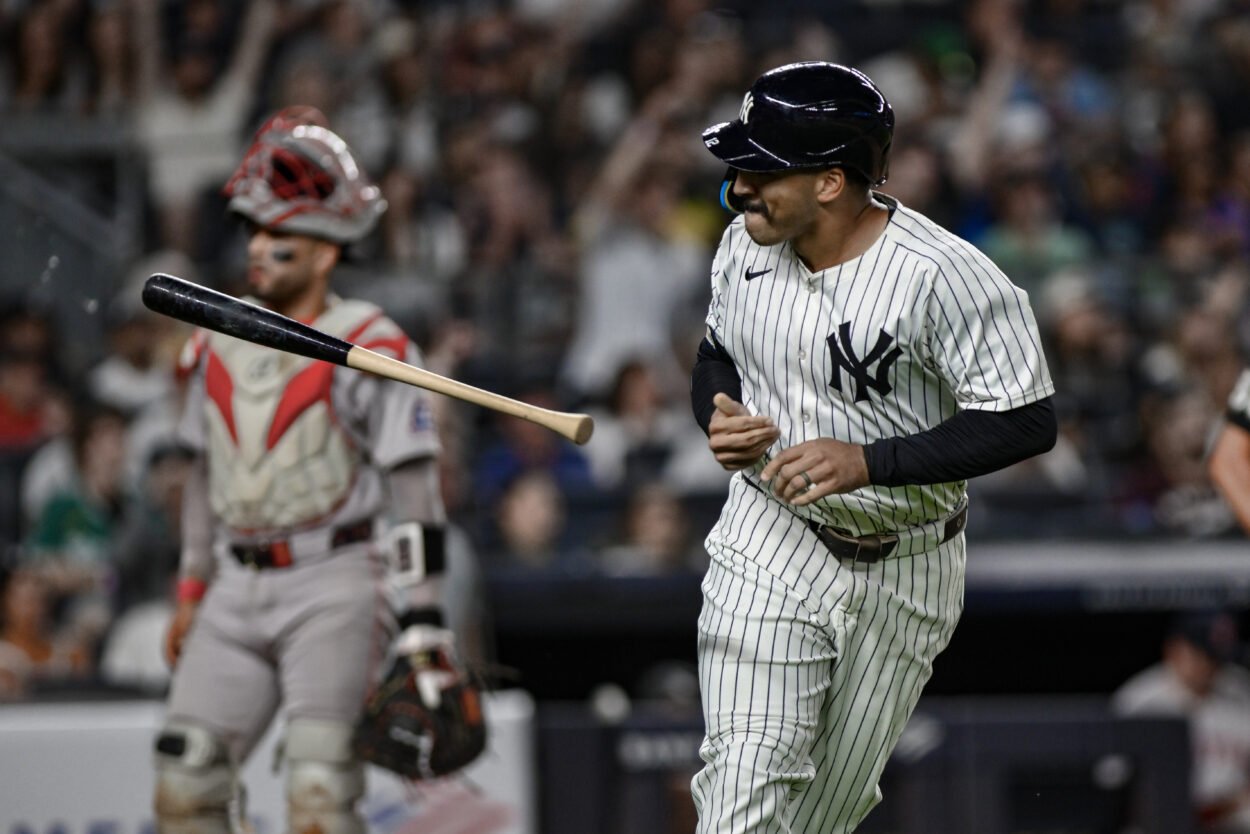
The New York Yankees are rolling the dice this offseason, and Trent Grisham is at the center of it. By extending him the $22 million qualifying offer, they’ve put themselves in an uncomfortable spot — one where the gamble could easily backfire.
Grisham, 29, had one of the more puzzling seasons in baseball. He finally delivered the offensive surge the Yankees had hoped for, hitting .235 with 34 homers and a 129 wRC+.
For the first time since 2021, he looked like a legitimate two-way player. The problem? His defense, once gold-glove caliber, collapsed. That makes this qualifying offer a complex mix of optimism and risk, one that could shape the Yankees’ offseason plans in a big way.

A big price tag for inconsistency
If Grisham accepts the qualifying offer, his salary would balloon to $22 million — roughly four times what he earned in 2025. That kind of raise for a player with one strong season in the past four years is a tough pill to swallow. It would eat a significant chunk of the Yankees’ available payroll, money that could be used elsewhere, perhaps to land a more reliable right-handed outfielder like Harrison Bader, at a fraction of the cost.
Bader, while limited offensively, mashes right-handed pitching and remains one of the best defensive center fielders in baseball. Signing him for a fraction of Grisham’s price could give the Yankees flexibility to reinforce the bullpen or add another veteran starter. Instead, they’re now stuck waiting for Grisham’s decision — and if he takes the deal, it could tie their hands financially for months.
Grisham’s market value could push him to walk
There’s still a chance this gamble works in the Yankees’ favor. Grisham may very well decline the qualifying offer, betting on his recent breakout to secure a long-term deal in free agency. At 29, this is his best window to lock in multiyear stability, and there should be no shortage of interest from teams in need of left-handed power and outfield versatility.
If he does sign elsewhere, the Yankees would receive compensatory draft capital — likely a third- or fourth-round pick depending on the structure of his new contract. That’s not a franchise-changing return, but it’s better than losing him for nothing. Still, the risk remains that Grisham’s market cools, forcing him to accept the offer and crowd an already expensive payroll.

Weighing potential upside against financial flexibility
In fairness, Grisham’s 2025 numbers were impressive enough to justify some level of investment. Thirty-four home runs don’t come cheap, and he played 152 games — his most in years — showing renewed durability. The Yankees might view that as proof of consistency finally setting in. But $22 million for one bounce-back year feels steep, especially for a player who posted a negative defensive value and has yet to show he can sustain offensive excellence over time.
For a front office trying to retool around Aaron Judge’s championship window, every dollar counts. The Yankees can’t afford to misfire on large contracts anymore, not with the luxury tax already breathing down their necks. Offering Grisham the qualifying offer isn’t reckless — it’s strategic — but it’s a calculated risk that could limit how aggressive they can be elsewhere.
If he declines, the Yankees win back some breathing room and a draft pick. If he accepts, they’re paying a premium for inconsistency. Either way, it’s a high-stakes decision that’ll say a lot about how confident the Yankees are in Trent Grisham’s breakout being real — or just another fleeting flash in the Bronx.
